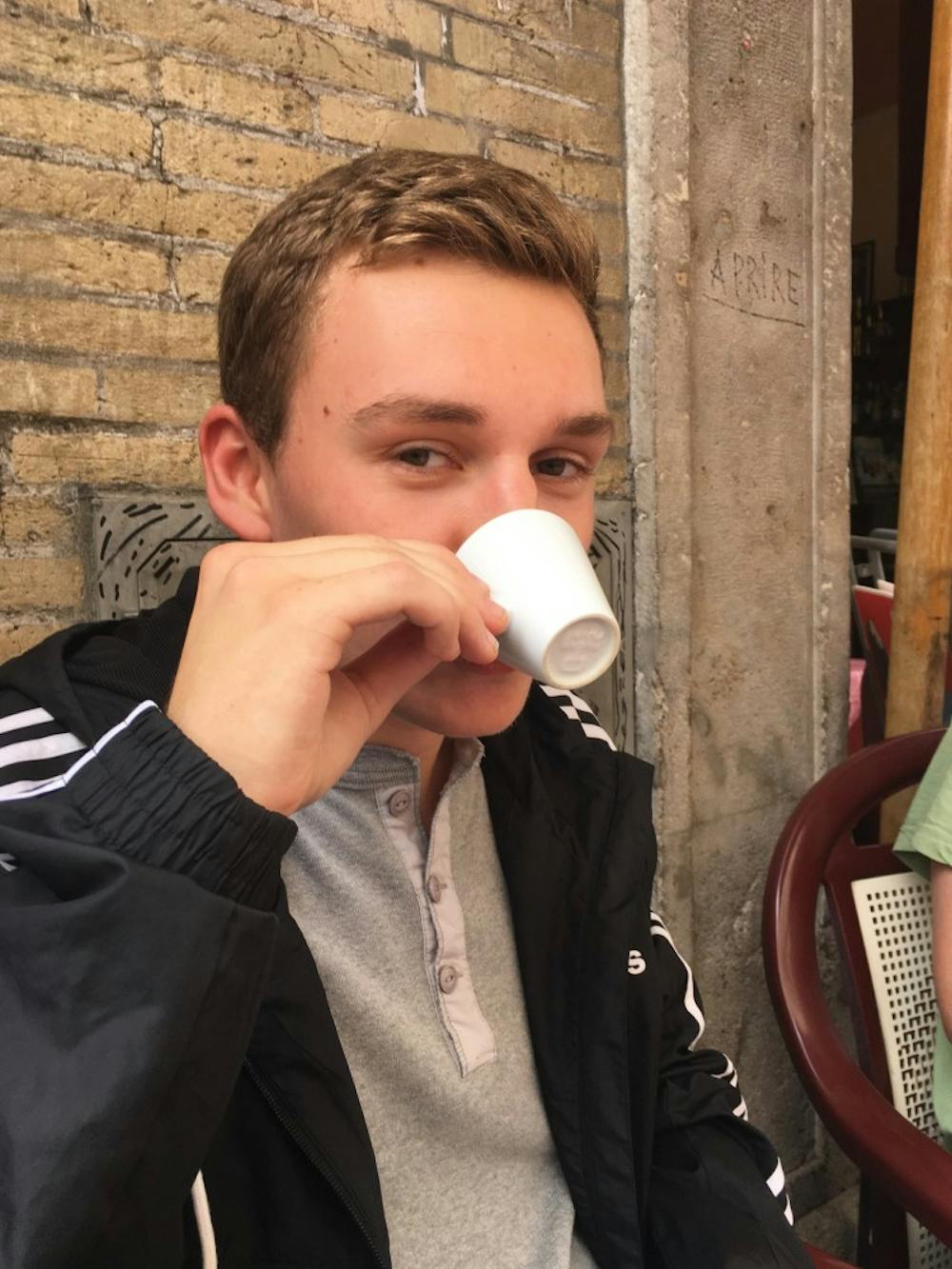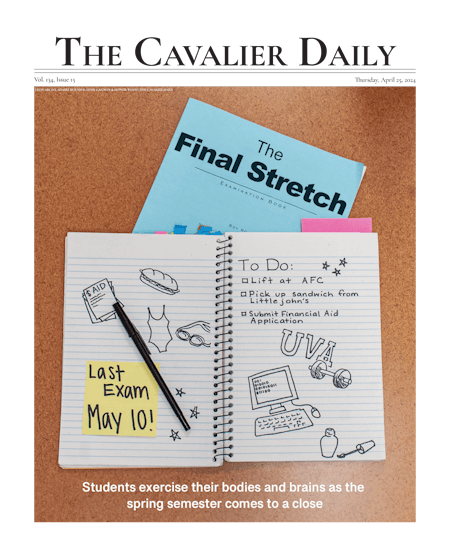My 10-day fall break backpacking trip began in the Escher museum, in Den Haag, the Netherlands. Den Haag is best described as a grown-up version of Amsterdam, a beautiful metropolis where everyone bikes everywhere and everything closes at 10 p.m.
M.C. Escher is best described as the artistic manifestation of a geometry textbook on LSD. His drawings are mesmerizing tessellations — forms, animals and architecture twisting and mutating endlessly. A lizard becomes a hexagon, a fish tucks itself between two birds with no space in between, a staircase turns into itself. Independent shapes, each different, interlock in complex ways, granular yet somehow combining into an enthralling whole. My travel companion Adam and I stood in the museum, transfixed, for hours.
Two days later, in Budapest, we found ourselves caught in a hail storm as we walked across a haunting, industrial, post-Soviet bridge. The hail came so fast and hard that we had no choice but to put our hoods up and stand with our backs to the wind — to walk forward meant getting whipped in the cheek with icy pebbles. Trucks rumbled by, the bridge’s crisp white pillars stretched skyward and Adam and I stood there, backs to the weather, laughing at our disastrous timing.
That evening, we paused in a bar on our way out for the night. As we ordered our drinks, we noticed there was a PowerPoint screen set up, splashed with Hungarian — a language with 44 letters that still uses “y” at least three times per word. As we settled in, we noticed that literally everyone else in the place had a paper and pencil. Hungarian trivia night! After a few minutes, with the help of Google Translate, we managed to decipher one of the questions. It was about Hungarian literature. We did not get the question right.
A few hours later, we boarded a barge full of young hostel-goers for a Halloween party ride down the river that bisects Budapest. The majestic Hungarian Parliament building slid by on one side, brilliantly illuminated against the night. A British girl told us that she had been to Budapest twice, and when we asked her to describe it, she offered no more detail than the phrase, “Budapest is weird.” An Irishman dressed as Randy from South Park stumbled by, singing a Liverpool soccer chant as he adjusted the enormous fake testicles he had attached to the front of his pants. The British girl repeated herself — “Budapest is weird.”
The thermometer the next day read seven degrees Celsius as Adam and I stripped off our shirts and stepped outside. For about 30 seconds my heart stopped beating — then I eagerly sank into the largest thermal bath in Europe. The giant, natural hot tub smelled vaguely of sulfur. Mist from the fountains in the bath rose up in front of the late afternoon sun. Ten ancient, leathery Hungarian men crowded around a handful of chess boards in the corner of the bath. In New York, all the elderly chess wizards go to Central Park — in Budapest, they strip down to their banana hammocks and play while they soak their bunions in the restorative water.
The nightlife spot closest to our hostel in Prague was called Cross Club. The decor aimed for “steampunk,” I think, but took a left turn somewhere and wound up in a much less whimsical place. A girl extinguished her cigarette on a network of decorative rusty pipes. A group of tattooed Czechs stood huddled in one corner. An old man stood near a rusty bicycle, grinning to himself. He raised his glass as we passed by. We turned the corner into the central dance area, where a DJ was working very hard from behind a stage set that looked like it had been lifted from the dumpster behind the studio where they filmed “Mad Max.” The single occupant of the dance floor was standing completely still. We left briskly.
Berlin’s club scene, by contrast, is the best in the world — hip, edgy, exclusive. You actually have to be cool to get in. The hostel employee took one look at my battered, tan-colored Clarks and knew we were doomed, but encouraged us to go out anyway. We asked him for recommendations.
“What kind of music do you want to hear?” he asked. “Isn’t it all techno?” I responded. “Oh God, no,” he responded, looking at us with pity.
Right around then, I began to expect we were doomed, too. The black-clad bouncer at the first club turned us away without a word, just a silent wave of a beefy German paw. The black-clad bouncer at the second place asked us who was playing that night, and we knew, because we had looked it up while we were standing in line. He gave us a good long look. “Sorry, I don’t let you in,” he said, in a thick Berlin accent. Oh well — getting rejected from the best nightclub in the world is still a cool story, right? Right? Right??
I returned to Italy a week ago. Since the trip has ended, I’ve tried desperately to make sense of all the silliness. Is there an arc? Is there a lesson? Is it possible to shoehorn a greater meaning out of this handful of tragicomic vignettes? Ancient Hungarians playing chess in a hot tub, going a hard 0/3 on clubs in Berlin — processing these wildly disparate images into a comprehensible whole is a baffling task.
As much as I’d like to, I can’t write a narrative that includes trivia night in Budapest and a steampunk club in Prague and then comes to a clean conclusion. All I can do is lay each anecdote next to each other and let them expand, filling the week. Each yarn informs the next but remains independent. The anecdotes become one of Escher’s tessellations, a series of forms that have no business fitting together but are arranged in a way that leaves them no choice.
As I staggered from the Soviet bridge ice storm to the decidedly “weird” boat party, any semblance of cohesive narrative went right out the window. I have no hope of digesting the trip as a story that makes any sense. There is no tidy moral. The only way to see a whole is to see a tessellation — flat, intricate, interlocking, full.





